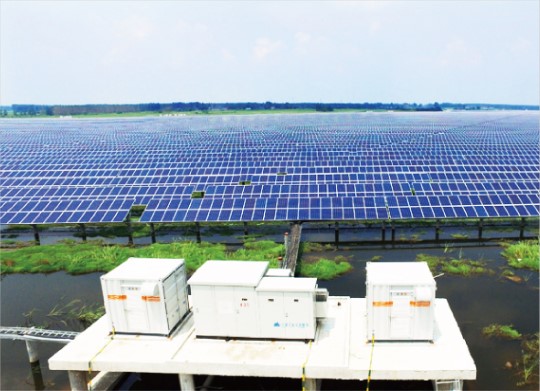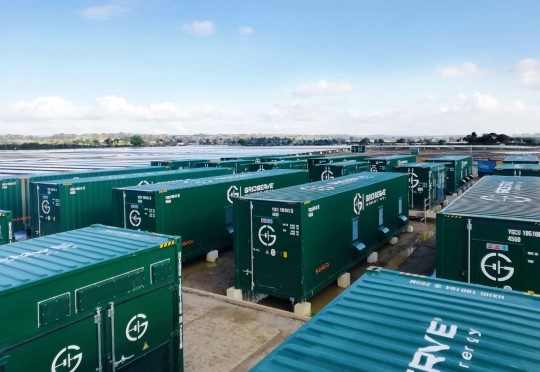Solar containers represent a growing innovation in renewable energy, offering a portable, self-contained power generation system that can be deployed in various settings. These units are often shipping containers modified to house solar panels, energy storage systems, and power management technologies. They are especially useful in off-grid or remote locations where conventional energy infrastructure is either too expensive or impractical to install. They provide a sustainable solution to power needs in multiple sectors, addressing challenges related to energy access, environmental sustainability, and operational efficiency.
This article delves into the typical uses of solar containers across different industries and scenarios, highlighting their versatility and impact on modern energy solutions.

1. Disaster Relief and Humanitarian Aid
One of the most critical applications of solar containers is in disaster relief efforts. When natural disasters like hurricanes, earthquakes, or floods strike, they often leave regions without access to electricity, complicating relief and recovery efforts. They provide an immediate, transportable energy solution, generating electricity for emergency shelters, field hospitals, and critical infrastructure. These containers offer a crucial advantage over traditional diesel generators because they don’t rely on fuel, which can be difficult to deliver in crisis zones where supply chains are disrupted.
Solar containers were notably used during relief operations following events like the 2010 Haiti earthquake and the 2017 Hurricane Maria in Puerto Rico. In these situations, they were deployed to power medical centers, communication towers, and water purification systems. By providing a continuous, renewable energy source, they improve the ability to coordinate relief efforts and ensure that vital services are maintained in the aftermath of a disaster.
2. Rural Electrification
In many parts of the world, particularly in developing countries, access to electricity remains a significant challenge. Extending the traditional electrical grid to remote, rural areas is often too expensive or logistically complicated. Solar containers offer a decentralized solution, bringing clean, reliable power to communities that are not connected to the grid. They are typically used to power essential services such as schools, health clinics, and homes.
For example, in regions of Sub-Saharan Africa and Southeast Asia, they are being deployed to provide off-grid electricity to rural communities. These units allow for the operation of lighting, refrigeration, water pumps, and communication equipment, which can dramatically improve the quality of life in these areas. Furthermore, by leveraging renewable energy, solar containers reduce the reliance on diesel generators and other forms of fossil fuels, contributing to both economic and environmental sustainability.
3. Military Operations
The military is another key user of solar containers, especially in remote or hostile environments where traditional power sources are either unavailable or unreliable. Military operations require a consistent energy supply to power communications equipment, command centers, and field hospitals, among other critical infrastructure. They offer a more sustainable alternative to diesel generators, reducing the logistical burden of fuel transport and lowering the operational risk associated with fuel convoys in combat zones.
The U.S. military, among others, has increasingly integrated solar container systems into its operations, especially in forward operating bases (FOBs). These containers provide energy for tactical equipment and living quarters, ensuring that troops have access to power even in the most remote or challenging environments. By using renewable energy sources like solar, the military also reduces its carbon footprint and enhances the sustainability of its operations.
4. Temporary or Mobile Infrastructure
Solar containers are frequently used to power temporary or mobile infrastructure, such as construction sites, outdoor events, and research stations in remote areas. Their portability and ease of deployment make them ideal for providing electricity in situations where traditional power sources are either unavailable or unsuitable. For construction sites located far from the grid, they can power lighting, tools, and machinery without the need for diesel generators, which can be costly and environmentally harmful.
In the entertainment industry, they are increasingly being used to provide power for music festivals, outdoor film screenings, and other events. By using renewable energy, event organizers can reduce their environmental impact while still ensuring that all necessary equipment, such as sound systems and lighting rigs, operates effectively. Moreover, the use of solar containers aligns with the growing demand for more sustainable practices in the event industry.
Similarly, in scientific research, particularly in remote or ecologically sensitive areas, they offer a clean, reliable power source. They enable researchers to operate scientific instruments, communication systems, and computing equipment without damaging the surrounding environment. Research stations in the Arctic, for example, have successfully used it to reduce their reliance on fossil fuels.

5. Telecommunications
The telecommunications industry is another major sector where solar containers are being employed. In remote areas or during emergencies, cell towers and communication hubs often require a reliable source of power. They provide an off-grid solution that ensures these systems remain operational, even in challenging conditions. By powering telecommunication infrastructure, they enable continuous communication services, which are critical in both everyday life and crisis scenarios.
In regions with underdeveloped energy grids, telecommunications companies are increasingly relying on solar containers to power mobile towers in rural or isolated areas. This approach not only reduces operating costs by eliminating fuel expenses but also supports broader sustainability goals by utilizing clean, renewable energy sources.
6. Agriculture and Farming
Solar containers are playing an increasingly important role in agriculture, particularly in regions where access to the electrical grid is limited. Farmers use these systems to power irrigation pumps, refrigeration units for storing crops, and other essential equipment. The ability to generate reliable, renewable energy on-site reduces dependence on costly and polluting diesel generators, making farming operations more efficient and sustainable.
In some cases, they are integrated with water management systems, allowing farmers to use solar power to operate water pumps for irrigation. This is especially beneficial in drought-prone regions where efficient water use is critical. Additionally, by powering cold storage units with solar energy, farmers can reduce post-harvest losses, keeping crops fresh for longer periods and increasing overall profitability.
7. Healthcare in Remote Areas
Healthcare facilities in remote or off-grid areas often struggle with unreliable electricity, which can severely limit their ability to provide care. Solar containers can bridge this gap by providing a dependable power source for medical equipment, lighting, and refrigeration units that store vaccines and other critical medications. In many developing countries, rural clinics have benefited from the deployment of it, allowing healthcare providers to offer better services to their communities.
They are particularly useful for powering refrigeration systems that maintain the cold chain for vaccines, which is vital for immunization programs in remote areas. They also ensure that clinics have a consistent power supply to operate medical devices and diagnostic equipment, improving patient outcomes.
8. Remote Tourism and Eco-Lodges
As the demand for sustainable travel options increases, eco-lodges and remote tourism operators are turning to solar containers to provide energy for their off-grid accommodations. Many eco-resorts are located in pristine natural environments where conventional energy sources would disrupt the ecosystem. They allow these establishments to offer modern amenities like lighting, hot water, and electric vehicle charging stations without compromising their commitment to sustainability.
In addition, they help these businesses reduce their operational costs by eliminating the need for expensive fuel deliveries to remote locations. This not only makes the operations more environmentally friendly but also enhances their economic viability in the long term.
9. Energy Access in Developing Countries
Finally, solar containers play a critical role in expanding energy access in developing countries. In regions where millions of people still live without reliable electricity, they offer a scalable, affordable solution. Governments and non-governmental organizations (NGOs) are increasingly deploying these units as part of rural electrification projects, enabling communities to access power for the first time.
By providing clean, renewable energy, they help address both energy poverty and climate change, offering a sustainable pathway for economic development. These systems can be used to power homes, schools, businesses, and community centers, fostering social and economic progress in regions that have traditionally been underserved by the energy sector.
Conclusion
Solar containers are a versatile and effective solution for addressing the energy needs of various sectors, from disaster relief and rural electrification to military operations and agriculture. Their ability to provide reliable, renewable energy in off-grid or remote locations makes them an increasingly popular choice for organizations seeking sustainable power solutions. As the world continues to transition toward cleaner energy sources, the use of it is expected to expand, contributing to a more resilient and environmentally responsible energy landscape.
CIMC TLC|XLC|RYC is a leading manufacturer of iso containers and various other standard and special logistics equipment. With years of experience in the industry, it focuses on the design, production and distribution of high-quality innovative products that meet the specific needs of customers.


